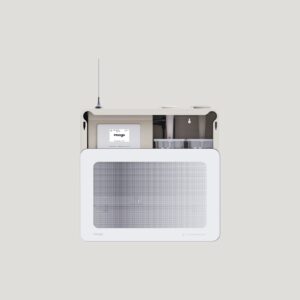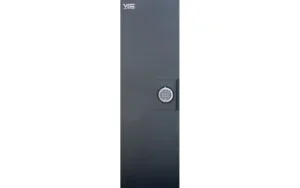Boosting User Experience Through Smart Hardware Product Design
Boosting user experience through smart hardware product design involves integrating intuitive interfaces, seamless connectivity, and ergonomic considerations. By leveraging cutting-edge technologies such as AI, IoT, and machine learning, designers can create products that anticipate user needs and adapt to their preferences. This entails streamlining user interactions, minimizing friction points, and optimising usability. Through thoughtful design, products can offer enhanced functionality, personalised experiences, and greater convenience, ultimately fostering user satisfaction and loyalty. Smart hardware design encompasses not only functionality but also aesthetics, ensuring that products not only perform well but also delight users aesthetically, enriching their overall experience.
Empowering Users: Smart Hardware Product Design For Enhanced Control
In the realm of smart hardware product design, empowering users means granting them unparalleled control over their devices. It involves crafting intuitive interfaces and functionalities that seamlessly align with users’ needs and preferences, fostering a sense of agency and mastery. By leveraging cutting-edge technology and ergonomic principles, smart hardware designers can amplify user empowerment, enabling individuals to effortlessly navigate and manipulate their devices to achieve desired outcomes. Through user-centric design approaches and continuous feedback loops, these products become enablers of empowerment, empowering users to harness the full potential of their devices.

Seamless Integration: Blending Hardware Product Design And User Interaction
Seamless integration in smart hardware product design involves harmonising hardware components with user interaction seamlessly. It requires a holistic approach that considers both the physical and digital aspects of the product, ensuring a fluid and intuitive user experience across all touchpoints. By meticulously aligning design elements, functionalities, and user interfaces, designers can create a cohesive ecosystem where hardware seamlessly integrates with user interaction, fostering a sense of continuity and ease of use. This synergy between hardware and interaction elevates the overall user experience, forging a deep connection between users and their devices.
Human-Centred Innovation: Hardware Product Design For Intuitive Interaction
Human-centred innovation in hardware product design prioritises the user experience, placing human needs, behaviours, and preferences at the forefront of the design process. It involves empathetic understanding of users’ motivations and challenges, which serves as a guiding light for crafting intuitive interactions and interfaces. By embracing user feedback, iterative prototyping, and usability testing, designers can create hardware products that resonate deeply with users, enhancing their lives in meaningful ways. This human-centric approach fosters empathy, inclusivity, and accessibility, ensuring that technology serves as a tool for empowerment and enrichment in users’ daily lives.
Integrating Intelligence: The Evolution Of Smart Hardware Product Design
Integrating intelligence into smart hardware product design marks a pivotal evolution in the intersection of technology and user experience. It entails imbuing devices with advanced capabilities such as artificial intelligence, machine learning, and sensor technologies to anticipate and adapt to users’ needs proactively. By leveraging data-driven insights and predictive analytics, intelligent hardware products can offer personalised experiences, automate routine tasks, and optimise performance in real time. This evolution transforms devices into proactive assistants, enhancing efficiency, convenience, and user satisfaction. As smart hardware continues to evolve, the integration of intelligence becomes indispensable for staying ahead in the digital age.
Innovative Design, Elevated Experience: The Power Of Hardware Product Design
Innovative design lies at the heart of elevating the user experience in hardware products, transcending mere functionality to create memorable and transformative interactions. It involves pushing the boundaries of conventional design paradigms, exploring novel materials, forms, and aesthetics to evoke delight and inspiration. By infusing creativity and craftsmanship into every aspect of the product, designers can evoke emotional connections and foster brand loyalty. This emphasis on innovation not only differentiates products in the market but also enriches users’ lives, sparking joy, curiosity, and a sense of wonder with every interaction.
Simplifying Complexity: Smart Hardware Product Design Solutions
Simplifying complexity in smart hardware product design entails distilling intricate functionalities into intuitive and accessible solutions that users can effortlessly comprehend and utilize. It requires a delicate balance between sophistication and simplicity, where complexity is abstracted away while retaining essential features and capabilities. Through clear and intuitive interfaces, guided workflows, and contextual cues, designers can demystify complex systems, empowering users to navigate with confidence and ease. This focus on simplicity enhances usability, reduces cognitive load, and fosters a sense of mastery, making technology more approachable and inclusive for users of all backgrounds.
Empowering Users: Unlocking Potential With Smart Hardware Product Design
Empowering users through smart hardware product design involves unlocking their latent potential by providing tools and capabilities that facilitate growth, creativity, and self-expression. It entails designing products that adapt to users’ evolving needs and preferences, empowering them to customise, personalise, and extend functionality according to their unique requirements. By fostering a culture of co-creation and collaboration, designers can empower users to become active participants in shaping their digital experiences. This empowerment transcends mere consumption, fostering a sense of ownership, agency, and fulfilment as users harness the full potential of their smart hardware devices.
Conclusion
The fusion of smart hardware product design and user experience optimization presents a transformative landscape for product innovation. By integrating intuitive interfaces, seamless connectivity, and anticipatory features, smart devices have the potential to redefine how users interact with technology. Through a user-centric approach, designers can harness the power of data analytics and user feedback to continuously refine and enhance the usability and functionality of their products. Ultimately, this symbiotic relationship between design and user experience not only enhances convenience and efficiency but also fosters deeper engagement and loyalty among consumers, paving the way for a more interconnected and intuitive digital future.
Resource URL:
https://en.wikipedia.org/wiki/Product_design

Fran Peters is a dedicated writer specializing in health and medical content. With a background in healthcare and a passion for helping others lead healthier lives, Fran brings a wealth of knowledge and expertise to her writing.














Post Comment